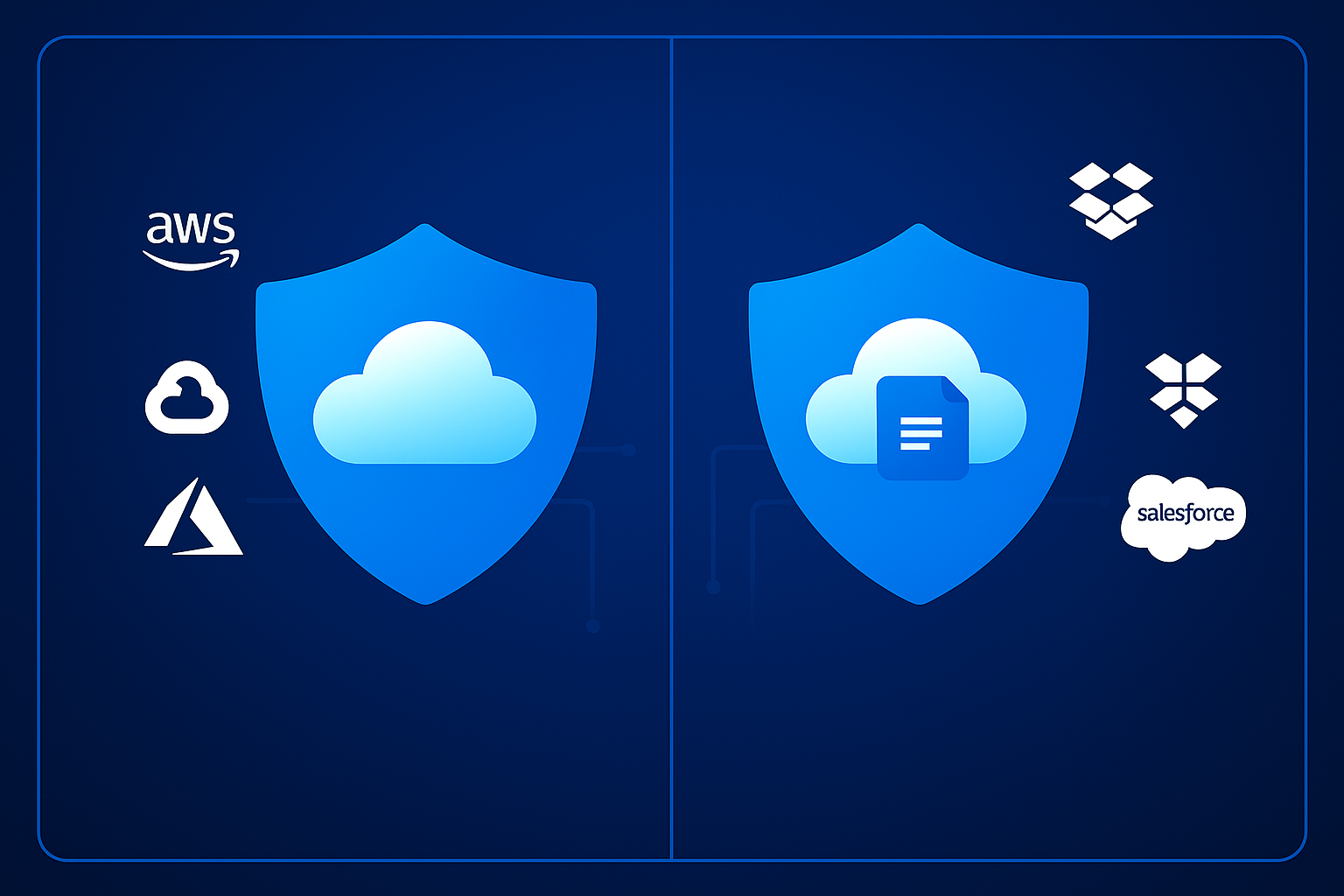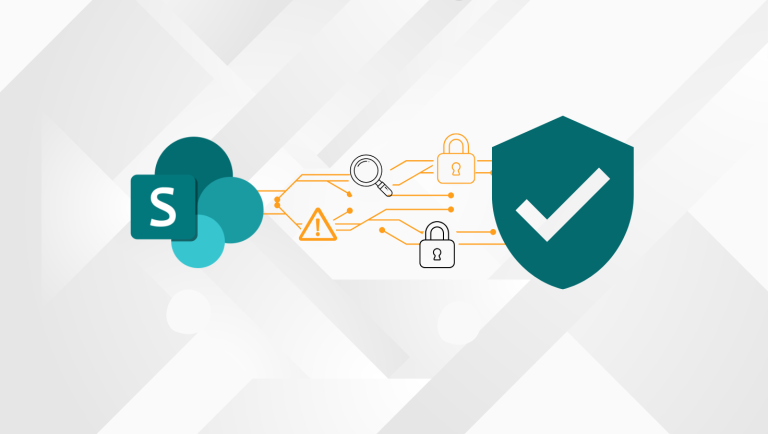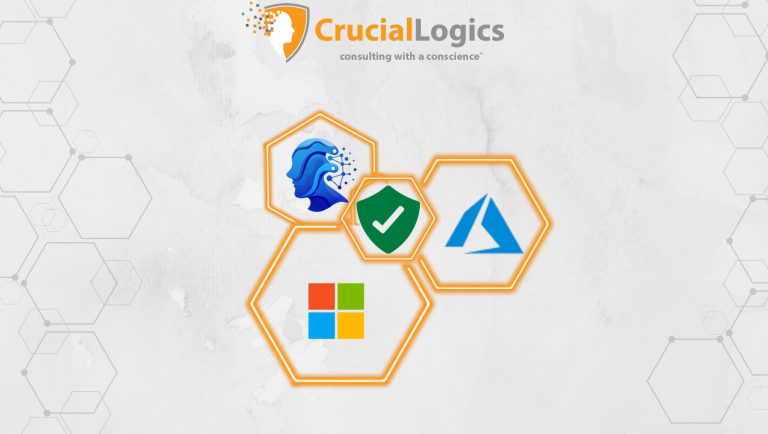Microsoft Defender for Cloud and Microsoft Defender for Cloud Apps are two distinct solutions designed to protect different parts of your cloud environment.
Defender for Cloud secures infrastructure as a service (IaaS) and platform as a service (PaaS) resources, such as virtual machines, containers, and cloud configurations across Azure, Amazon Web Services, and Google Cloud. Defender for Cloud Apps, a cloud access security broker (CASB) solution, monitors SaaS usage, detects risky behaviors, and applies policies across applications like Microsoft 365, Dropbox, and Salesforce.
This article discusses their core capabilities, when to use each, how they work together, and best practices for deployment.
Microsoft Defender for Cloud
Microsoft Defender for Cloud is a Cloud-Native Application Protection Platform (CNAPP) that secures multicloud infrastructure from development to runtime. It provides end-to-end visibility and control over IaaS and PaaS resources across Azure, AWS, and Google Cloud, helping you detect misconfigurations, prioritize risks, and enforce policies before attackers can exploit them.
The platform brings together three key capabilities:
- DevSecOps integration: Defender embeds security into Continuous Integration/Continuous Deployment (CI/CD) pipelines, scanning infrastructure-as-code templates (Azure Resource Manager, Terraform, and Bicep) for misconfigurations and compliance risks.
- Cloud Security Posture Management (CSPM): CSPM continuously assesses your environment against industry benchmarks like the Center for Internet Security (CIS) and the National Institute of Standards and Technology (NIST), providing actionable recommendations to close security gaps and maintain regulatory compliance.
- Cloud Workload Protection (CWPP): It protects virtual machines, containers, Kubernetes clusters, storage, and databases with advanced threat detection, vulnerability management, and just-in-time access controls.
Defender for Cloud also shares signals with Microsoft 365 Defender, enabling correlation across cloud, endpoint, identity, and email threats. For example, an exposed storage account detected in Azure might be linked to lateral movement attempts flagged on a compromised device, surfacing as a unified incident in the security dashboard.
Microsoft Defender for Cloud Apps
Microsoft Defender for Cloud Apps is a Cloud Access Security Broker (CASB) built to secure your Software-as-a-Service (SaaS) environment. It delivers full-spectrum protection for cloud applications by monitoring user activity, managing risk, and enforcing data governance, regardless of whether users access apps from managed devices or remote locations.
It provides coverage across the following areas:
- Core Cloud Access Security Broker (CASB) functionality: This includes Shadow IT discovery, visibility into app usage across your environment, protection against app-based threats, and ongoing assessments for compliance and information protection.
- SaaS Security Posture Management (SSPM): Helps security teams continuously assess and strengthen the security posture of SaaS apps by identifying misconfigurations and enforcing best practices.
- Advanced threat protection: As part of Microsoft’s Extended Detection and Response (XDR) stack, it correlates threat signals across identities, endpoints, and cloud apps, surfacing complete attack chains and enabling faster, more accurate incident response.
- App-to-app protection: Secures OAuth-enabled third-party apps that connect to your environment, detecting excessive permissions, suspicious activity, or misuse of tokens that could expose sensitive data.
Defender for Cloud Apps integrates with Microsoft Defender for Endpoint, Microsoft Entra ID, and Microsoft Purview, giving you unified control over access, data, and threats across your SaaS ecosystem.
When to Use Defender for Cloud
Shadow IT Discovery and Governance
Whenever your employees use unsanctioned SaaS tools without IT approval—like file-sharing platforms or productivity apps—Defender for Cloud Apps detects them through log analysis and assigns risk scores. It gives security teams visibility into shadow IT and enables policy-based governance to either block, sanction, or monitor these tools.
Enhancing Microsoft 365 security
Defender for Cloud Apps extends protection in your Microsoft 365 environment by adding behavioral analytics, anomaly detection, such as mass download attempts, and real-time investigation tools. This helps detect insider threats and advanced cloud-based attacks that native controls may miss.
Securing Third-Party SaaS Applications
If your business relies on platforms like Salesforce, Dropbox, Workday, or ServiceNow, Defender for Cloud Apps enforces consistent policies across them. It applies Data Loss Prevention (DLP) rules, identity-based controls, and session restrictions—even on non-Microsoft apps—ensuring unified governance for sensitive data across your cloud stack.
Protecting Remote and Hybrid Access
As users increasingly access SaaS apps from unmanaged devices or remote locations, Defender for Cloud Apps enables session-level controls, such as blocking downloads or restricting copy-paste actions based on the device’s compliance state, IP address, or risk profile. This allows secure access without limiting productivity.
When Both Solutions Are Necessary
Most enterprises benefit from deploying both Microsoft Defender for Cloud and Defender for Cloud Apps, as they address different but interconnected layers of the threat landscape. Together, they offer unified visibility and coordinated protection across infrastructure, applications, identities, and data.
Hybrid Cloud Adoption
Some organizations, such as banks and healthcare organizations, often maintain a mix of on-premise systems, Infrastructure as a Service (IaaS), Platform as a Service (PaaS) workloads, and Software as a Service (SaaS) applications. Defender for Cloud secures infrastructure across Microsoft Azure, Amazon Web Services (AWS), and Google Cloud Platform (GCP). At the same time, Defender for Cloud Apps protects SaaS usage during and after the transition, ensuring no visibility gaps across platforms.
Zero Trust Architecture
Zero Trust requires continuous verification of both user access and resource health before granting any access. Defender for Cloud enforces workload and configuration security, while Defender for Cloud Apps governs application access, user sessions, and risky behaviors—working together to support granular, identity-driven policy enforcement.
Defending Against Advanced Persistent Threats (APTs)
Sophisticated attacks often involve multiple stages, such as exploiting cloud misconfigurations, then pivoting into SaaS environments via compromised accounts. Using both solutions allows security teams to correlate signals across infrastructure and application layers, detect lateral movement, and orchestrate a coordinated response.
Decision Matrix: Choosing Defender for Cloud, Defender for Cloud Apps, or Both
| Decision Factor | Defender for Cloud | Defender for Cloud Apps | When to Use Both |
| Primary Asset Focus | IaaS/PaaS resources: virtual machines (VMs), containers, storage, databases | SaaS applications: Microsoft 365, Salesforce, Dropbox | Mixed environments with both cloud infrastructure and SaaS applications |
| Visibility Needs | Infrastructure configurations, workload risks | User sessions, app usage, Shadow IT | Unified visibility across infrastructure and application layers |
| Compliance Drivers | Infrastructure standards (e.g., SOC 2, PCI DSS, FedRAMP) | Data protection laws (e.g., GDPR, HIPAA) | Full-spectrum compliance covering data, access, and platform configuration |
| Threat Focus | Misconfigurations, lateral movement, exposed services | Account compromise, data exfiltration, and OAuth abuse | Defending against advanced persistent threats (APT) using multiple attack vectors |
| Ideal User Group | IT operations, DevOps, and cloud architects | Security analysts, IT admins, and compliance officers | Enterprise-wide security teams and Zero Trust initiatives |
| Deployment Priority | Infrastructure configurations, workload risks | SaaS risk governance, DLP, session-level controls | Organizations implementing Zero Trust or hybrid-cloud strategies |
Best Practices for Implementing Defender for Cloud & Defender for Cloud Apps
Deploying Defender for Cloud and Cloud Apps involves key steps that are unique for every environment. Here are some best practices that we typically follow for organizations that come to us for deployment.
App Discovery Configuration
Set up App Discovery to detect unsanctioned cloud apps (Shadow IT) in your environment. You can do this by forwarding traffic logs from your firewall or proxy, or installing the endpoint agent on user devices.
Most organizations uncover 5 to 10 times more apps than they expect, often including file-sharing, messaging, and productivity tools that haven’t been reviewed or approved by IT.
Data Loss Prevention (DLP) Setup
Enable built-in DLP templates that are aligned with regulatory requirements and data protection policies. These templates automatically detect sensitive data, including credit card numbers, ID numbers, and health records.
Next, customize the policies to match your organization’s data classification rules. You can add custom data types, focus on specific document labels, or apply stricter controls to departments that handle regulated information.
Session Control Deployment
Use session controls to manage what users can do within SaaS apps, especially when accessing them from unmanaged devices or high-risk locations.
Start with monitoring-only mode to observe real-world usage and user behavior, then advance to high-risk scenarios, blocking download or copy-paste actions during external sharing or Bring Your Own Device (BYOD) access.
This approach reduces friction for end users while ensuring your policies are working as intended before full enforcement.
Security Policy Customization
Default policies in Microsoft Defender for Cloud provide a solid baseline protection, but they often require fine-tuning to reflect your industry-specific requirements, risk tolerance, and technical architecture.
Focus on these high-impact areas:
- Data classification and sensitivity labeling: Customize rules to align with internal data handling policies and procedures. For example, define sensitivity labels that flag confidential project documents stored in Azure Blob or alert on data transfers between regions with differing compliance zones.
- Network security controls: Adjust policies to flag or block high-risk configurations and map them against your network segmentation and zero-trust architecture goals.
- Encryption enforcement
Ensure Defender for Cloud is configured to alert on resources that lack encryption at rest or in transit. This includes unmanaged disks in Azure, unencrypted SQL instances, or misconfigured key vault integrations.
Ensure you document every modification, especially deviations from Microsoft’s recommended baselines, to maintain clarity during internal reviews, audits, or incident investigations.
Alert Integration and Response Planning
Integrate Defender for Cloud alerts into your existing SIEM or ticketing systems for unified incident response. Native integrations are available for Microsoft Sentinel, wherein you need to define clear escalation workflows for high-severity alerts—ideally aligning with your SOC’s standard operating procedures to minimize response delays.
Conclusion
Microsoft Defender for Cloud and Defender for Cloud Apps are most effective when used together to close security gaps across both infrastructure and SaaS layers. While each solution addresses distinct threat vectors, their integration supports a unified, Zero Trust-aligned security model.
If you’re managing workloads in multicloud environments, Defender for Cloud provides posture management, threat detection, and secure DevOps capabilities. If you’re concerned with SaaS risk and user behavior, Defender for Cloud Apps gives you visibility, control, and threat protection across cloud apps.
Organizations that deploy both Defender for Cloud and Defender for Cloud Apps typically achieve faster threat response, improved compliance alignment, and reduced reliance on multiple third-party tools.
For a detailed consultation on how to tailor deployment to your environment, existing security stack and compliance needs, speak with us today.






